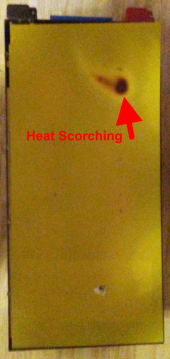rather “how many systems have you commissioned and over what time frame”?
and THAT is the crux of it.
Thing is plenty of people have working systems using either method - a straight series config, some with a straight series config with multiple batteries in parallel, some with cells paralleled first then put in series and then systems with cells paralleled fist then put into series and then paralleled batteries in the bank.
So to get capacity, it really comes down to cells paralleled first then put into series and then having multiple batteries in a bank OR making a battery out of single cells connected in series and then having paralleled batteries in the bank. How else cn one get to a large capacity if around 200Ah cells are the limit for boats?
Pros and cons on each approach. If possible I would stick with cells connected in series and a BMS monitoring every cell which I can see, but that just does not give the capacity needed -unless I go to a large number of series connected batteries connected in parallel to a bank. I am shooting for a 50kWh battery bank x 2. I would like to have 2 completely different battery systems for redundancy. Its all very well wanting but doing is another thing altogether. Space and weight concerns rear thier ugly head here.
So the next step down the ladder in terms of risk would be a battery made from cells connected in series with its own BMS and then having multiple of these batteries in parallel - lots of BMS's needed for this approach, plus main fuse for each battery and probably a contactor for each battery as well. If one goes for the cheaper Chinese BMS that seems to be the flavour of the month it can help with keeping costs down to some degree - but then how good and reliable is that BMS? Reading some of the comments on another thread, the seller does not back up the product. So seems a bit suspect.
If one goes for a high end BMS you can be assured it will work well but it will be very expensive for all those BMS's. Then is still the main fuse and contactor per battery that is paralleled in the bank.
Next step down the ladder in terms of risk is paralleled cells first then the paralleled cells connected in series to give the desired voltage. Then repeat this a number of times by connecting these batteries in parallel to make up the battery bank. The only advantage here is a lessor number of batteries in parallel in the bank because the capacity was built up somewhat by paralleling cells first and then connecting in series to the desired voltage. So lessor number of BMS's and associated wiring etc, less number of main fuses and contactors...... BUT one loses visibility to each and every cell.
I think that pretty much sums it up from what I have read about it.
Now which way to go .... that is the question and it seems there are as many opinions as there are people who comment. Which leads back to your comment above.



